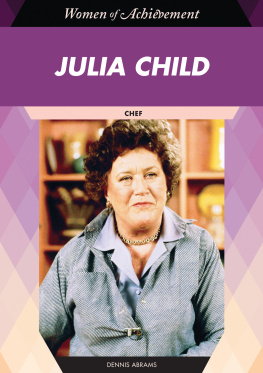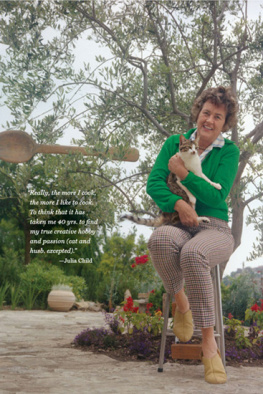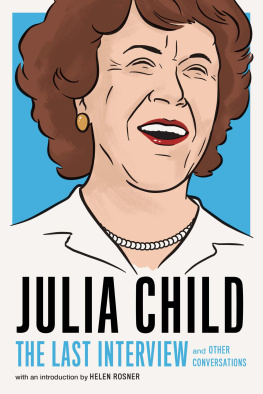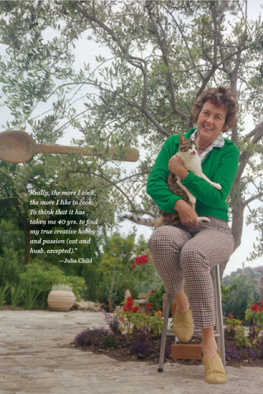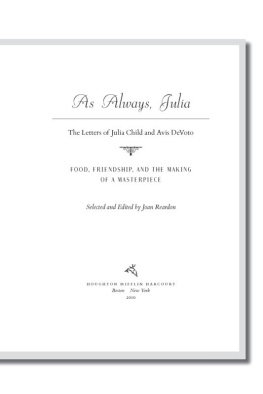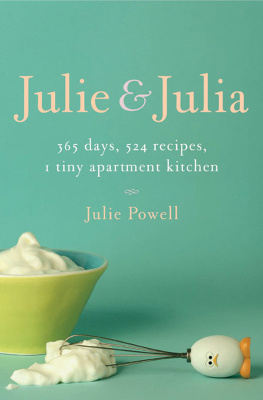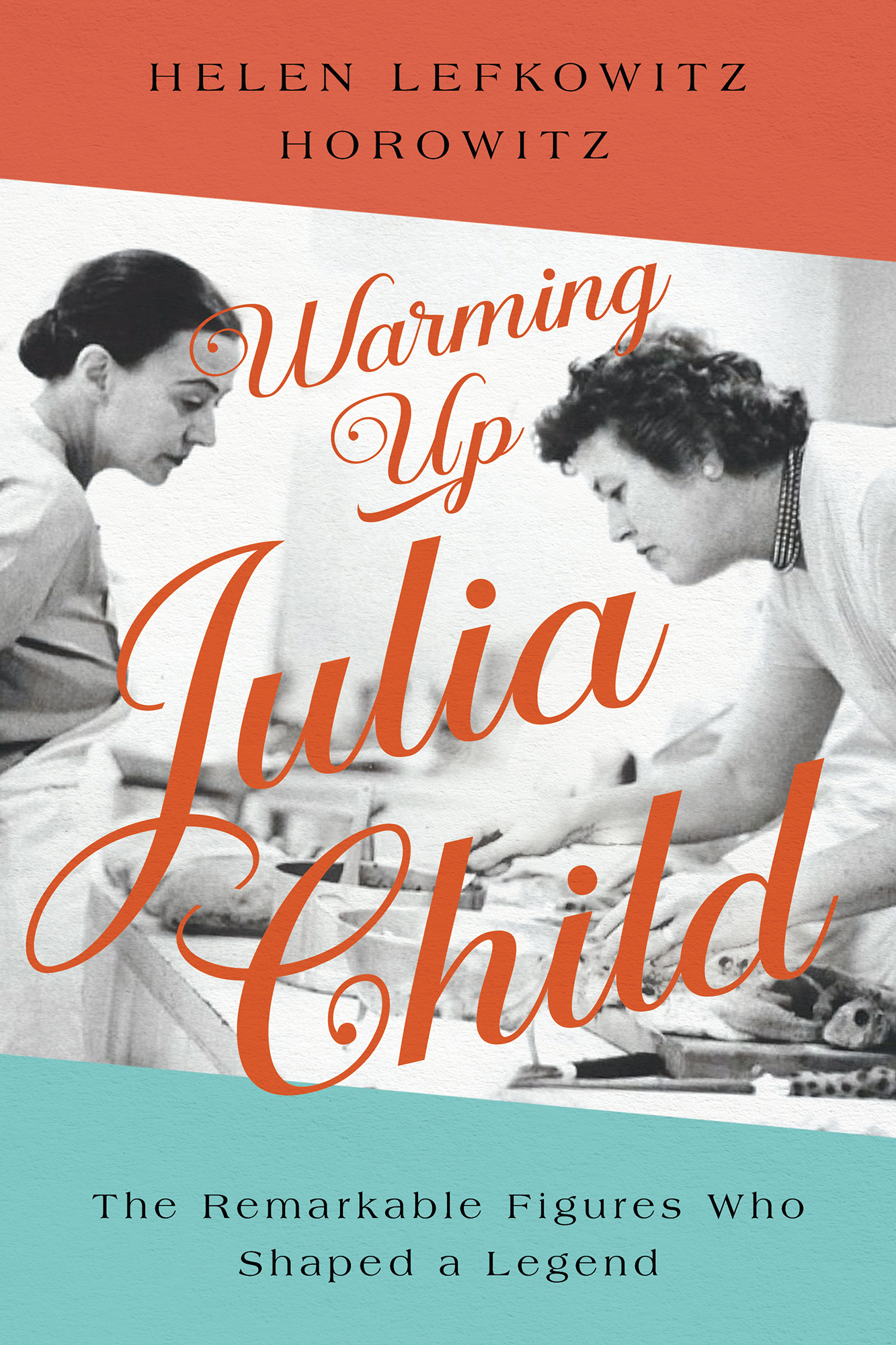Contents
Guide
Helen Lefkowitz Horowitz
Warming Up Julia Child
The Remarkable Figures Who Shaped a Legend
WARMING UP JULIA CHILD
Pegasus Books, Ltd.
148 West 37th Street, 13th Floor
New York, NY 10018
Copyright 2022 by Helen Lefkowitz Horowitz
First Pegasus Books cloth edition April 2022
Interior design by Maria Fernandez
Cover Design by Faceout Studio, Molly von Borstel Paris; Chez Gourmettes school, [Avis and Julia], Schlesinger Library, Harvard Radcliffe Institute, Hollis: 581329.
Photo by Paul Child.
All quoted materials cited from the Julia Child Materials are copyrighted as follows: Julia Child Materials 2021, Julia Child Foundation for Gastronomy and the Culinary Arts.
All rights reserved. No part of this book may be reproduced in whole or in part without written permission from the publisher, except by reviewers who may quote brief excerpts in connection with a review in a newspaper, magazine, or electronic publication; nor may any part of this book be reproduced, stored in a retrieval system, or transmitted in any form or by any means electronic, mechanical, photocopying, recording, or other, without written permission from the publisher.
Library of Congress Cataloging-in-Publication Data is available.
ISBN: 978-1-64313-938-8
Ebook ISBN: 978-1-64313-937-1
Distributed by Simon & Schuster
www.pegasusbooks.com
To Julia Childs alma mater, Smith College, an institution capable of transforming the lives of its students and faculty, including my own and that of my husband, Daniel Horowitz.
INTRODUCTION
J ulia Child was a person of great intelligence, drive, and accomplishment, but she did not work and achieve alone. This is a book about friendship and collaboration. It is a study of Julia and her relationships with those who assisted and enabled her workand ultimately her enduring fame. Julia Child had a great capacity for friendship. She also possessed a keen business sense that carried an understanding of the importance of working with others and appreciating their help in achieving her goals.
Julia Child made friends easily. Vivacious and warm, she drew others to her, and by the early 1950s, as her culinary ambitions developed, she began to gather those who stimulated, nurtured, aided, and championed her. She and Paul, the man she married in 1946, were already partners, supporting each other through lifes many challenges. He not only encouraged Julia as she became an accomplished home cook, teacher, cookbook writer, and television presenter, he aided her work as her photographer and man-of-all-work. In Paris in 1951, Julia met and formed an alliance with Simone (Simca) Beck, who first taught with Julia in their cooking school and then brought her into collaboration on a French cookbook for Americans. Simca supplied recipes, shared with Julia responsibilities for testing each one, and provided all recipe titles. A letter in 1952 led Julia to a close friendship with Avis DeVoto, who encouraged her and opened the door to Houghton Mifflin and a book contract. In 1959, when that publisher rejected the manuscript, Avis saw that it was immediately sent to William Koshland, the unofficial general manager of the publishing house, Alfred A. Knopf. Koshland carefully shepherded the cookbook manuscript through the publishing process, seeing that, from that point on, it was in expert hands and, in the many years that followed, that Julia was treated with every courtesy. Koshland put the manuscript in the hands of Judith Jones, who read and supported it and, with Knopfs acceptance, served as its careful and tactful editor. These key allies aided and abetted Julia on her path to Mastering the Art of French Cooking. With that achievement behind her and its promotion in mind, in 1962 Julia began to work at WGBH with Ruth Lockwood, a staff member of the educational TV station who became Julias right arm in the production of The French Chef.
These six people helped Julia Child develop her gifts between 1952, when she began teaching at the cooking school and working on the cookbook, and 1966, when her fame was sealed by an Emmy Award for The French Chef and her portrait on the cover of TIME magazine. Without these six, Julia Child would not have become the Julia of fame and memory, and Americans would have lost an important new way to understand and enjoy food and the pleasures of the dining table.
Of course, there were many others in the background who made Julia Childs career possible. There were her prosperous parents, a loving mother and a financially generous father, who saw that their energetic and friendly daughter received the excellent education that fostered her organizational skills and lucid writingfirst at the Polytechnic School, a private day school in Pasadena, California, then the Katharine Branson School, a boarding school north of San Francisco, and finally, Smith College in Massachusetts.
These parents implicitly contributed an awareness of business and its values as part of Julia Childs heritage. Her father, John McWilliams, Jr., was a real estate manager who became vice president of J. G. Boswell Company, a major land owner and developer of Southern California land during that regions growth years. Active in civic affairs, in 1934 he became president of the Pasadenda Chamber of Commerce. Julias mother, also Julia, held wealth from her own familys paper manufacturing company in Grafton, Massachusetts; her death when Julia was in her mid-twenties left Julia grieving, but also with a bequest that gave her independent means.
In early adulthood, although ambitious to become a novelist, Julia worked in advertising. Producing copy was unfulfilling, but the work fostered her self-discipline, developed her organizational skills, and enabled her to understand the important role of promotion. World War II offered the chance of meaningful service, and Julia joined the Office of Strategic Services (OSS), working first in Washington and then abroad. In that work she learned the importance of accuracy and proved to be extremely efficient and organized. In Ceylon and China she arranged and kept the agencys files, ultimately processing top-secret papers as head of the Registry.
This experience served her well in her later career, as in like manner she meticulously dated and filed recipes for the future cookbook.
During her World War II service, Julia met the most important person in her life, Paul Cushing Child. They met in Ceylon and then were separately transferred to China. There the two often escaped army food to eat in small nearby restaurants and enjoy each others company. Their relationship deepened, and by the time of their return to the United States at the wars end, they were a romantic couple. After joining up in Pasadena, they traveled by car across country to Maine and the summer place of Pauls twin brother Charlie and his wife Freddie, where they announced their intention to marry. An auto accident failed to delay their wedding on September 1, 1946.

Julia and Paul at Their Wedding, Schlesinger Library, Harvard Radcliffe Institute.
Paul got a job at the State Department, and they settled in Washington, D.C. Charlie, too, was in government service and lived with his wife nearby. This allowed Freddie to try to help Julia learn to cook. The shared life of the brothers and their wives in Washington wasnt to last, as both men soon learned that their jobs would be ending. Charlie decided to become an artist full time; Paul began to negotiate with the United States Information Service about a posting abroad. He got lucky, and in 1948, Paul and Julia departed for Paris, where Paul was assigned to the American embassy to be in charge of exhibits.


